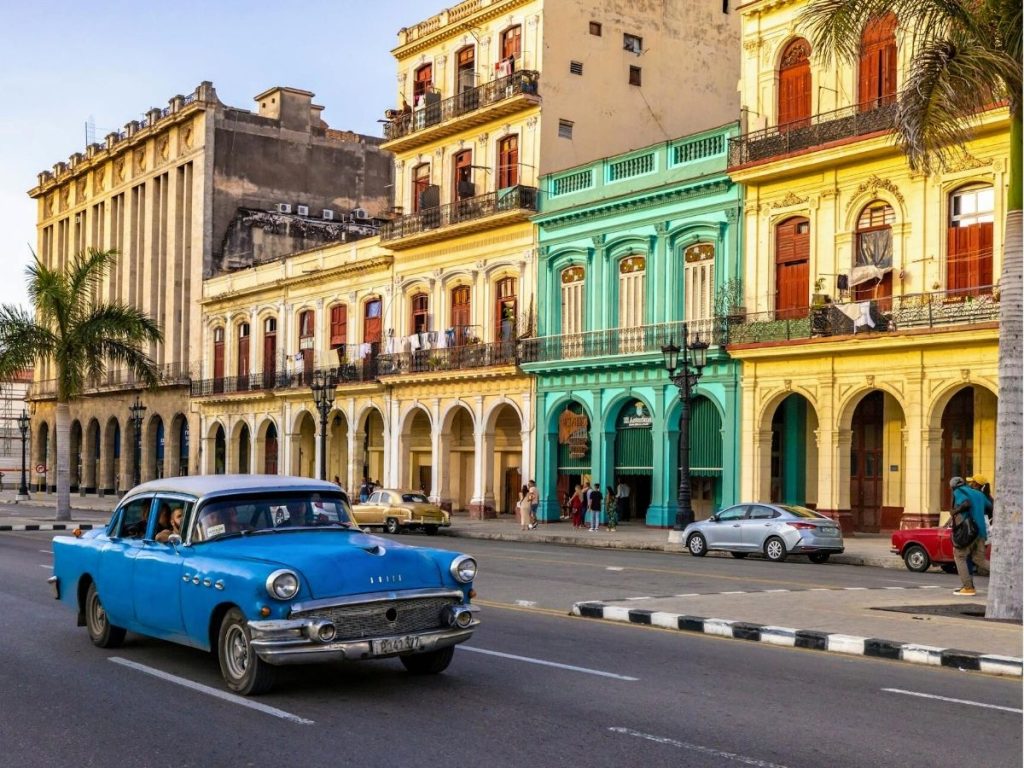A Day in the Life of a Local in Havana, Cuba
Havana, Cuba, is a city of contrasts—where vintage cars cruise past crumbling colonial buildings, where rhythms of salsa fill the air, and where life is lived with passion and resilience. Beyond its tourist appeal, Havana thrives as a vibrant hub of everyday life for its residents. Spending a day with a local provides a deeper appreciation for the city’s culture, history, and warmth.
Here’s what a typical day in Havana might look like from the perspective of a local.
Morning: The Sounds and Smells of Havana Wake Up
6:30 AM: A Simple Start
The day begins early in Havana. Streets come alive with the sounds of roosters crowing, bicycle bells ringing, and neighbors exchanging cheerful greetings. A local’s morning often starts with a cafecito, a small but strong cup of Cuban coffee brewed on the stovetop in a metal cafetera.
Accompanying the coffee is pan con mantequilla—a slice of soft bread toasted and spread with butter. For those lucky enough to have fruit, a plate of fresh guava, papaya, or mango adds a tropical touch.
8:00 AM: Heading to Work or School
Many locals commute on foot or via almendrones (classic American cars repurposed as shared taxis) to work or school. Teachers, artists, engineers, and shopkeepers alike navigate the bustling streets, often dressed with a mix of practicality and flair.
For those who work in tourism or as independent artisans, mornings might involve preparing their crafts or setting up for the day. Teachers and government employees head to their respective offices, often carrying lunch packed from home.
Midday: Navigating Challenges with Creativity
12:00 PM: A Typical Lunch
Lunch is often a modest meal, reflecting both Cuban culinary traditions and the resourcefulness required in a country where food can be scarce. Rice and beans (known as arroz y frijoles), paired with a small portion of pork, chicken, or fish, are staples. Vegetables like yuca or plantains might make an appearance if they’re in season.
Many locals buy lunch from small home-run eateries called paladares, where dishes are affordable and cooked with love.
1:00 PM: Siesta or Hustle
The tropical heat makes afternoons slower-paced for some, while others use this time to juggle extra jobs. The Cuban economy often requires locals to be resourceful, whether they’re moonlighting as taxi drivers, musicians, or selling handmade goods to tourists.
Afternoon: The Heartbeat of Havana
3:00 PM: Community Connections
Havana thrives on community. Streets double as social hubs where locals gather to chat, play dominoes, or watch children kick a soccer ball. A walk through a neighborhood reveals laundry hanging from balconies, street vendors selling fresh peanuts (mani) in paper cones, and the hum of life around every corner.
Young people might head to the Malecón, the iconic seaside promenade, to relax by the water, share stories, and listen to music.
Evening: Music, Family, and Celebration
6:00 PM: Family Time
Dinner is a family affair. Locals often gather around simple dishes, such as ropa vieja (shredded beef in tomato sauce) or picadillo (ground beef with olives and raisins), paired with more rice and beans. Food is shared generously, even when resources are limited, reflecting the strong emphasis on communal living.
8:00 PM: Music and Dance
As the sun sets, Havana transforms into a city of rhythm. Music pours out of every corner, from live bands in casas de la música to impromptu gatherings on street corners. For many locals, the night involves dancing salsa, rumba, or reggaeton, either at a community event or in their living rooms.
- La Tumba Francesa: Traditional Afro-Cuban drumming and dancing offer a vibrant cultural experience.
- Salsa Night: Locals head to spots like Casa de la Música or smaller neighborhood venues to show off their moves.
10:00 PM: The Malecón at Night
The Malecón becomes a hub of activity after dark. Couples, friends, and families gather by the seawall, sharing stories, bottles of rum, and songs under the stars. It’s a place where life feels free, despite the challenges of daily living.
Challenges and Resilience
While a day in Havana is rich in culture and connection, it’s not without its difficulties. Locals often face shortages of basic goods, limited internet access, and economic constraints. Yet, the Cuban spirit is marked by creativity and adaptability. Many turn to bartering, DIY solutions, and community support to navigate these challenges.
Tips for Experiencing Havana Like a Local
- Engage in Conversation: Habaneros are known for their friendliness and openness. A simple “Hola” can lead to a rich exchange of stories.
- Support Local Businesses: Choose paladares, buy handmade crafts, and tip generously to contribute directly to the community.
- Learn Basic Spanish: Knowing a few phrases can go a long way in building connections.
- Explore Beyond the Tourist Spots: Wander into lesser-known neighborhoods to see the everyday life of Havana.
- Respect the Culture: Be mindful of photography and avoid treating local life as a spectacle.
Conclusion
A day in the life of a local in Havana is a testament to the city’s vibrant spirit and the resilience of its people. From the morning’s cafecito to the night’s music-filled streets, Havana is a place where life is lived fully, even in the face of challenges.
Experiencing Havana through the eyes of its residents offers not just a deeper understanding of the city but also a lasting appreciation for its warmth, creativity, and indomitable soul.

